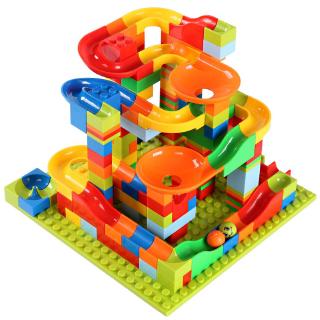The Mormons And The Marble Drop
From James Donahue’s Diary
During the two months that I was forced to lay on my back and recover from a bout with mononucleosis at South Haven, I buried my nose in books on Christian theology. Our church pastor and some of the deacons came to visit and I fired questions about church doctrine at them attempting to clarify various issues that left me confused. I was not alone in that. I found that many of the great minds in church theology struggled with many of the same questions.
One day when two young Mormons came to my door, earning their crowns in their own religious dogma, I was bored enough to let them in the house for a round of theological debate. I discovered to my joy that I already knew and understood more about my religion than they did theirs. I virtually backed them out of the door after they found they could not answer my challenges. I had been assisted by a class our church had sponsored in religious “cults,” and the Mormon faith was included. The class provided a hard bound book that was in my library.
A few days later I was visited by two more Mormons. This time they were elders in the faith who were prepared to try to overpower my challenges. Apparently the two young men reported my zeal and called on the elders for assistance in dealing with such a person as I.
It was definitely a more challenging duel, but I succeeded in holding my ground and backing these more educated men in the Mormon faith out my door as well. In the process, I was awarded with a copy of the Book of Mormon to add to my library. I found it to be a strange imitation of the style of writing found in the King James Bible, complete with all of the “thee”s” and “thou’s” of old English text, even though the book was supposed to have been dictated to the cult founder, Joseph Smith, in America.
The other momentous accomplishment during those days of recovery was my invention of a “marble drop” from of a box of Lego blocks. We had given our son, Aaron, Lego blocks as Christmas gifts for several consecutive years and he had, by then, a large box filled with the blocks of all shapes and sizes. While examining the blocks one day I found some marbles mixed among them. I also discovered that I could arrange the blocks in such a way that a marble would fall directly through any hole left in the build. The marbles and the Lego blocks were made for one another.
When I found some Lego pieces that were shaped to make roof tops of houses, and roof peaks, the idea hit me that I might be able to build a structure with holes within that would not only allow a marble to fall through, but in the process, be directed in various directions after striking one of these pyramid-shaped parts. I built a small structure and found that it worked perfectly. With two different possible outlets, I could drop a marble in a hole in the top and the marble might come out on one side or the other. The outcome was always unpredictable.
This, of course, led to the manufacture of bigger, and much more elaborate marble drops. I finally used every block in the box and came up with a structure so elaborate that the marble dropped in the top could be heard dropping, clicking, and rolling through a wide variety of pathways before emerging from one of many outlets on the sides or at the bottom. Aaron was enamored with my invention. We had great fun building and redesigning marble drops after that.
I thought briefly of filing for a patent on my idea, or at least writing the Lego block company and suggesting the idea for a new version of their toy. But I never followed through. About a year after that someone else produced their own version of my invention. That was my first experience with putting a creative new idea in the collective unconsciousness and having someone else pick up on it.
They say that once an idea occurs to anyone it goes into a universal collective unconsciousness that is assessable to anyone. This is why various scientists often come up with the same discoveries within days of one another.
From James Donahue’s Diary
During the two months that I was forced to lay on my back and recover from a bout with mononucleosis at South Haven, I buried my nose in books on Christian theology. Our church pastor and some of the deacons came to visit and I fired questions about church doctrine at them attempting to clarify various issues that left me confused. I was not alone in that. I found that many of the great minds in church theology struggled with many of the same questions.
One day when two young Mormons came to my door, earning their crowns in their own religious dogma, I was bored enough to let them in the house for a round of theological debate. I discovered to my joy that I already knew and understood more about my religion than they did theirs. I virtually backed them out of the door after they found they could not answer my challenges. I had been assisted by a class our church had sponsored in religious “cults,” and the Mormon faith was included. The class provided a hard bound book that was in my library.
A few days later I was visited by two more Mormons. This time they were elders in the faith who were prepared to try to overpower my challenges. Apparently the two young men reported my zeal and called on the elders for assistance in dealing with such a person as I.
It was definitely a more challenging duel, but I succeeded in holding my ground and backing these more educated men in the Mormon faith out my door as well. In the process, I was awarded with a copy of the Book of Mormon to add to my library. I found it to be a strange imitation of the style of writing found in the King James Bible, complete with all of the “thee”s” and “thou’s” of old English text, even though the book was supposed to have been dictated to the cult founder, Joseph Smith, in America.
The other momentous accomplishment during those days of recovery was my invention of a “marble drop” from of a box of Lego blocks. We had given our son, Aaron, Lego blocks as Christmas gifts for several consecutive years and he had, by then, a large box filled with the blocks of all shapes and sizes. While examining the blocks one day I found some marbles mixed among them. I also discovered that I could arrange the blocks in such a way that a marble would fall directly through any hole left in the build. The marbles and the Lego blocks were made for one another.
When I found some Lego pieces that were shaped to make roof tops of houses, and roof peaks, the idea hit me that I might be able to build a structure with holes within that would not only allow a marble to fall through, but in the process, be directed in various directions after striking one of these pyramid-shaped parts. I built a small structure and found that it worked perfectly. With two different possible outlets, I could drop a marble in a hole in the top and the marble might come out on one side or the other. The outcome was always unpredictable.
This, of course, led to the manufacture of bigger, and much more elaborate marble drops. I finally used every block in the box and came up with a structure so elaborate that the marble dropped in the top could be heard dropping, clicking, and rolling through a wide variety of pathways before emerging from one of many outlets on the sides or at the bottom. Aaron was enamored with my invention. We had great fun building and redesigning marble drops after that.
I thought briefly of filing for a patent on my idea, or at least writing the Lego block company and suggesting the idea for a new version of their toy. But I never followed through. About a year after that someone else produced their own version of my invention. That was my first experience with putting a creative new idea in the collective unconsciousness and having someone else pick up on it.
They say that once an idea occurs to anyone it goes into a universal collective unconsciousness that is assessable to anyone. This is why various scientists often come up with the same discoveries within days of one another.

